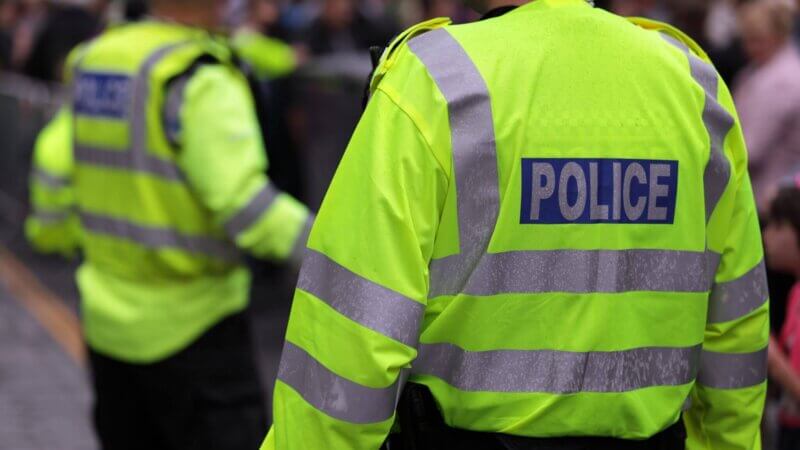How is child pornography defined by UK law?
UK law defines child pornography as indecent images of children – those aged under 18. Such images do not have to show the subject being sexually assaulted or molested – if a child is naked and the image is emphasising their genitals or involves provocative posing, this can be classified as indecent.
What makes an image indecent under UK law?
Indecent images are prohibited by law. For an image to be prohibited, three elements would normally be present:
- The image will be pornographic or sexually provocative
- The image will be grossly offensive or obscene
- The image may focus solely or primarily on the subject’s genitals or anal region
What are the worst types of indecent image according to UK law?
The most serious indecent images of children will often include some or all of the following:
- The performance of a sexual act – intercourse or oral – with or in the presence of a child
- A sexual act such as masturbation involving a child or in the presence of a child
- A penetrative act of a child’s anus or vagina with either a body part or other object
- A penetrative act performed in the presence of a child
- An act of intercourse – penetrative or oral – performed by a child on an animal
- An act of intercourse – penetrative or oral – performed on an animal in the presence of a child
What are the types of laws around indecent images?
The law categorises indecent images of children in four general ways:
- Possession of indecent images – the physical or digital possession of an indecent image which is prohibited by law
- Making of indecent images is dealt with very similarly to possession cases and involves the viewing of an image which in turn results in the image being downloaded to the device on which it is viewed
- The distribution of indecent images – sometimes this may have involved the sending or sharing of a digital file, for example by social media, email in a chat room or file sharing programme. It must be established that the person intentionally distributed the image and that he did so intending to send an indecent image. For the latter element, the prosecution must show that the sender had knowledge that the image was indecent
- The production of indecent images. This is different to the making of indecent images. Production cases would typically involve the actual taking of a photograph or production of a film, whereby the accused person may be filming or using the camera to produce indecent material
How are indecent images graded according to UK laws?
The General Sentencing Council classifies indecent images in three grades – or categories:
- Category A – sexually explicit images of penetration, sadism or activity of a sexual nature with an animal, plus children in pain. This is the most severe grading
- Category B – sexually explicit images of non-penetrative activity such as masturbation, usually without the presence of an adult. Images of this nature are classified as mid-range in severity
- Category C – images of erotic or sexually explicit posing. These images are graded the least severely by law
Determining intent in viewing child pornography
To be found guilty of possessing indecent images of children, it is necessary to prove that you were aware of the presence of the indecent images, whether in photograph form or digitally on a laptop, tablet or phone. Knowledge will often be inferred if there has been relevant web search history activity or other corroborative activity which suggests that the user was aware and did view the material.
Whilst being unaware of the presence of the images – such as if they are stored on a shared computer – does not mean you will automatically be found innocent, it also does not mean you will be found guilty.
Experts will examine any devices which may have indecent material stored on them to assess how the material may have got there. In doing so, they will prepare a report which details what has been found. The report will also consider and address various factors including:
- If there is a legitimate reason for possessing the indecent images
- If there is any evidence to suggest that the material was specifically searched for or requested
- The age of the children depicted in the images
- The number of images and over what period/ length of time they were viewed/ accessed
What are the defences for child pornography offences?
There are two statutory defences under UK law which can be applied to indecent image charges:
- Legitimate reason – there must be a valid reason for the defendant to be found in possession of indecent material. This defence is rarely used
- Lack of awareness – the defendant must be able to prove they had not seen the images and they had no reason to assume the material was indecent. This defence could be argued if the images were made accidentally or inadvertently, such as an online pop-up
- In relation to distribution allegations, it is a defence if it can be shown that the indecent image was either not sent or, if it was sent (via social media for example), it is established that the sender was not aware that it was in fact indecent
How are sentences decided for viewing and possessing child pornography?
Possession of indecent images of children is an either-way offence, meaning a case can be heard in either the magistrates’ court or the Crown Court. These are very complex cases and expert advice is essential from the outset, as there are life-changing consequences to these cases.
A sentence for possessing or making indecent images showing child pornography will depend upon the categorisation of the images, alongside the amount of images involved. Any aggravating or mitigating factors relevant to the case will also be considered when sentencing.
What are the sentences for each category of indecent image?
Possession of a Category A indecent image has a starting sentence point of a year in prison, with a maximum sentence of three years in prison. The offence of making a Category A image has more severe penalties than possession, with a minimum sentence of 2 years in prison for distribution and a minimum of 6 years in prison for production.
Possession of an indecent image graded as Category B has a starting prison sentence of 26 weeks. Sentences for producing or distributing Category B images range from 1 to 4 years in prison.
Sentencing for possession of a Category C indecent image begins with a community order, with production or distribution beginning at a year in prison, with a maximum sentence of 3 years in prison.
In addition, if you are convicted for a child pornography offence – including charges relating to indecent images – you will be required to sign the Sex Offenders’ Register.
What should I do if I have been accused of a child pornography offence?
For specialist legal advice on cases of child pornography and possession of indecent images, get in touch with our experienced team of expert sexual offence solicitors. Seeking expert legal advice at the earliest stage – particularly if you have accidentally viewed child pornography – can make a significant difference to the outcome of your case.
Call us on 0333 577 0522 to discuss your individual circumstances. At Lawtons we have considerable experience in defending cases of indecent images all around the UK and we will work with you to ensure the best possible outcome for you, whilst aiming to minimise the impact on your personal life and your reputation.
About the author
For specialist legal advice on cases of child pornography and possession of indecent images, get in touch with our experienced team of expert sexual offence solicitors. Seeking expert legal advice at the earliest stage – particularly if you have accidentally viewed child pornography – can make a significant difference to the outcome of your case.
Call us on 0333 577 0522 to discuss your individual circumstances. At Lawtons we have considerable experience in defending cases of indecent images all around the UK and we will work with you to ensure the best possible outcome for you, whilst aiming to minimise the impact on your personal life and your reputation.
FAQs about Accidentally Viewing Child Pornography
What is a pornographic image according to UK law?
What is the difference between viewing and possessing an image?
What UK laws cover making and possessing indecent images?





